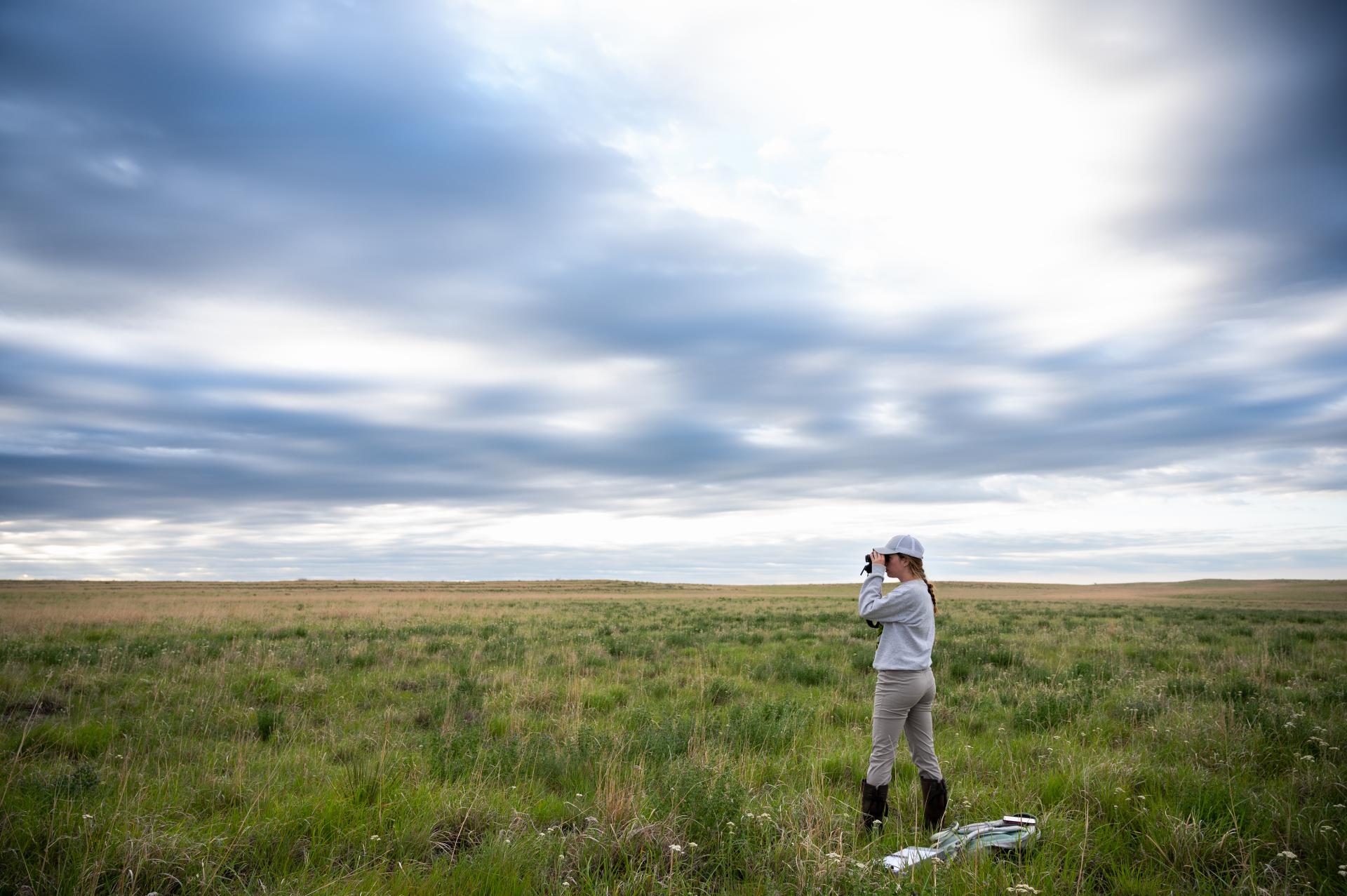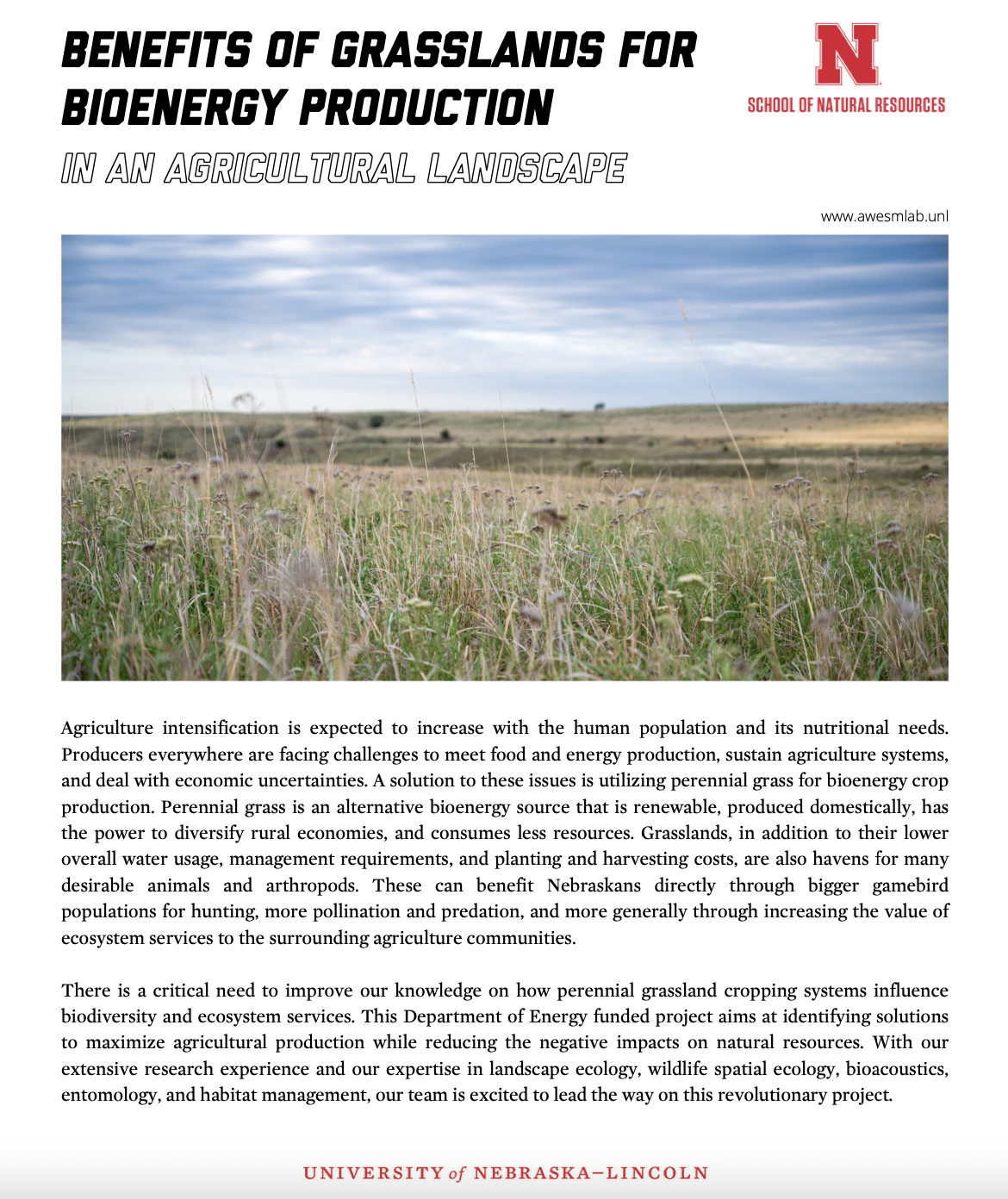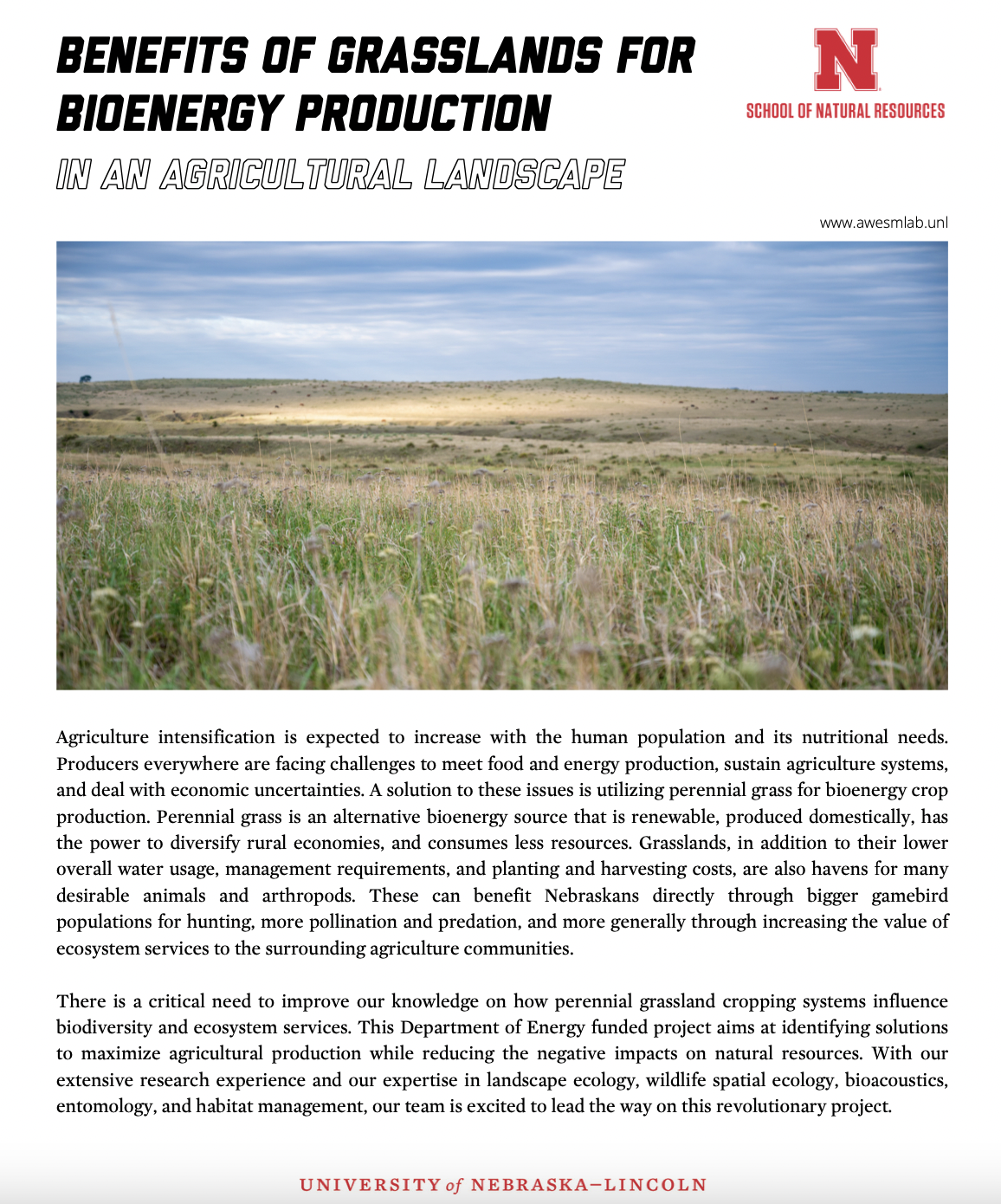
Bioenergy Crop Production: Implications for Grassland Bird Communities
Graduate Student
Research Technicians
- Jay Cleveland (UCARE)
- Hunter Swanson (2022)
- Samantha Garcia (UCARE, Cabela's)
- Ryan Lamont (2021)
- Wyatt Ervin (2023)
Collaborators
Funding Source
Agriculture intensification is anticipated to increase as the human population and their nutritional demands increase. With the world’s population expected to increase to two billion people by 2050, the need for agriculture landscapes to escalate their productivity is at an all time high. Many negative environmental impacts on soil, water, and biodiversity are coupled with intensification of agriculture. These impacts can not only have severe influences on our natural world, but also on the sustainability and profitability of the average American farm. Producers everywhere are facing challenges to meet food and energy production, sustain agriculture systems, and face economic uncertainties. A solution to these issues is utilizing perennial grass for bioenergy crop production. Perennial grass is an alternative bioenergy source that is renewable, produced domestically, has the power to diversify rural economies, and consumes less resources.
There is a critical need to improve our knowledge on how perennial grassland cropping systems influence avian species richness. A limited amount of information exists on the influence that perennial grassland species types have on the amount of avian species richness in an agriculture landscape. With this new information, grassland bird conservation in agricultural-dominated landscapes can improve while increasing overall cropland profitability.
Our research will evaluate two specific goals:
- Do perennial grassland cropping systems influence avian species richness?
- Does landscape context influence avian species richness within and around perennial grassland cropping systems?

